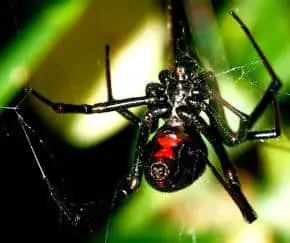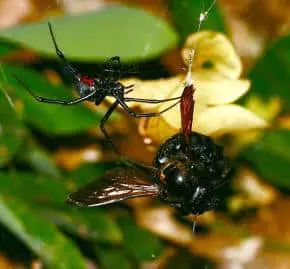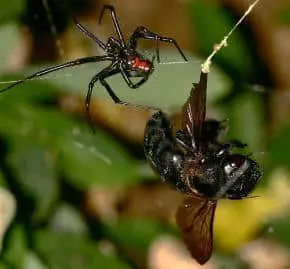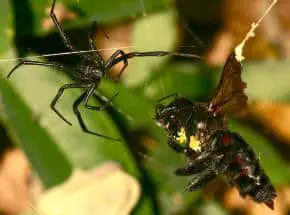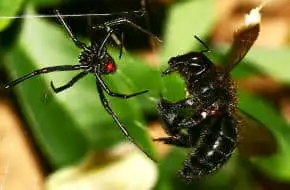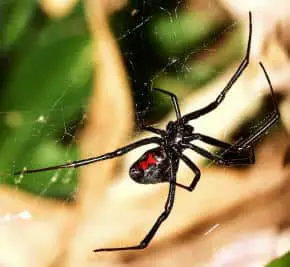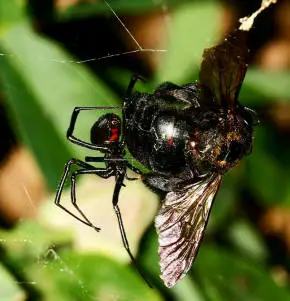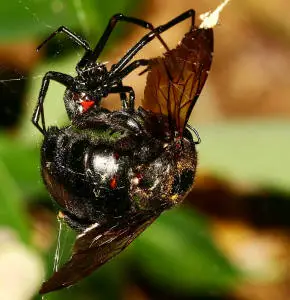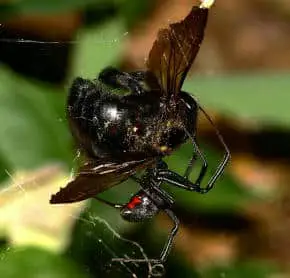The Black Widow, (Latrodectus mactans), is a venomous spider of the family Theridiidae, order Araneida. The female, about 1.3 cm (0.5 in) long, is glossy black, densely clothed with microscopic hairs, and marked with a characteristic red hourglass on the underside of the abdomen. The male, which is rarely seen, is smaller than the female and has four pairs of red marks along the sides of the abdomen. The Black Widow is found in the warmer regions in every state in the United States except Alaska; it lives in a variety of natural and domestic habitats.
The life cycle of the widow spiders are all similar. The female lays approximately 250 eggs in an egg sac which is about 1/2 to 5/8 inch in diameter. The eggs hatch in 20 days and remain in the egg sac from about 4 days to 1 month.
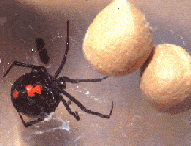
The young spiders then molt to the second stage and begin feeding. As the young spiders grow, they construct a loosely woven web and capture progressively larger prey. Male spiders moult 3 to 6 times before maturing. The females moult 6 to 8 times and occasionally eat the males after mating. Generally, the females are not aggressive unless agitated, although they are prone to bite when guarding an egg sac.
The venomous bite of the Black Widow Spider, causes muscle spasms and breathing difficulty in humans and may be fatal. The female is distinguished by a red hourglass marking on its underside. The diet of the Black Widow consists of insects, spiders, and centipedes captured with its web. After mating, the female may ensnare and feed upon her mate – hence the name Black Widow.
Here are some great photos of a black widow spider by Rich Swanner. All photos are copyright to their owners and may not be reproduced without permission.
Click here to go to more photos of Widow Spiders. You can click on the images below to enlarge them.

